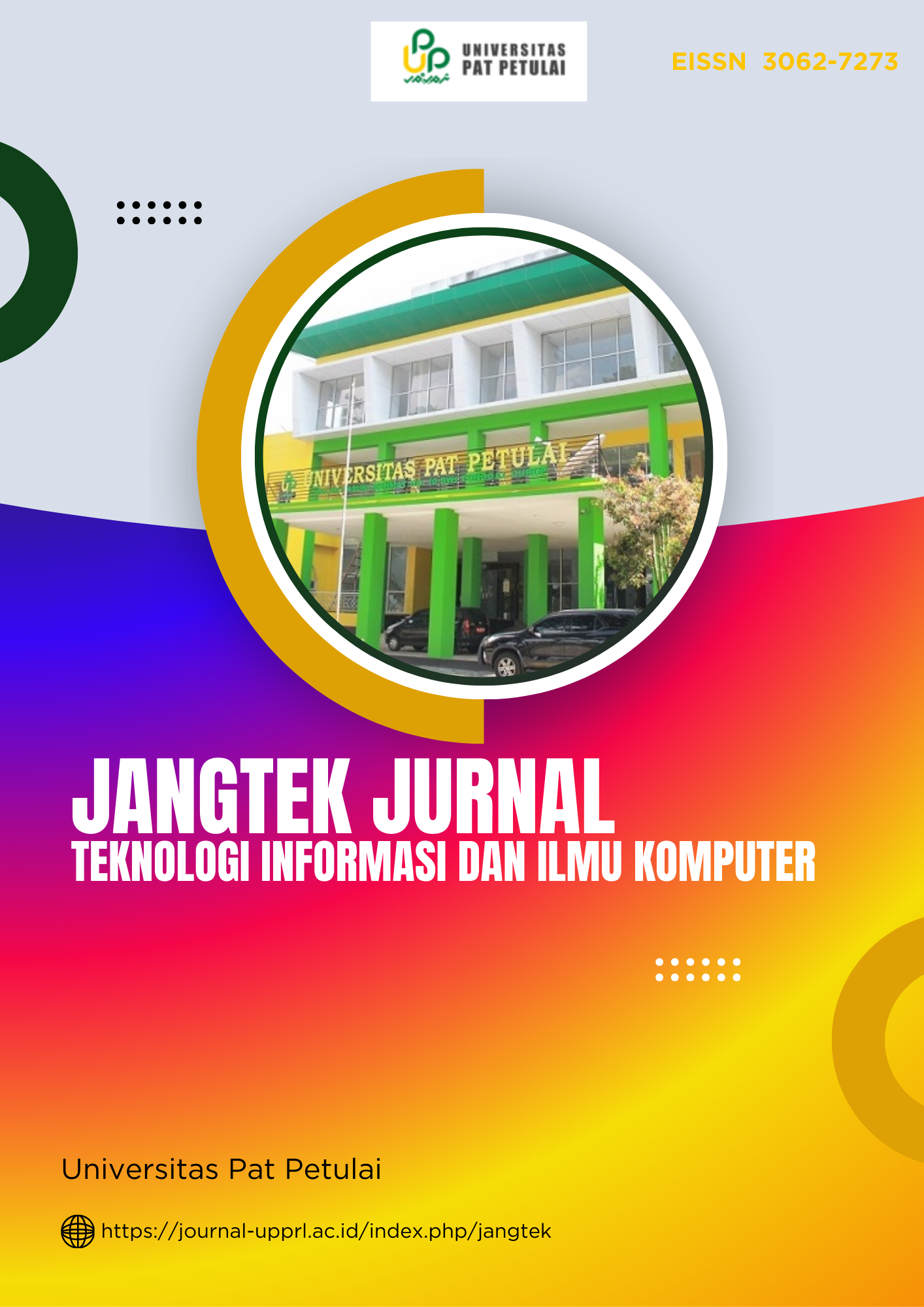Application of the C.45 Data Mining Algorithm to Predict Reading Interest in the Rejang Lebong Regional Library
Keywords:
Data Mining, C4.5 Algorithm, Regency Regional Library, Prediction of Reading Interest.Abstract
Data Mining is a computer science method commonly used in the knowledge search process. This method is often found in the fields of machine learning and statistics. The c4.5 algorithm is a classification technique in Machine Learning which is used in the data mining process by forming a decision tree. The data used in this research is primary data originating from the source where the research was conducted. This research was created in order to determine the classification of reading interest and the level of accuracy using the C4.5 algorithm data mining method to produce a model in the form of a decision tree to predict the types of books that are of interest based on the type of book, gender and occupation of the reader at the Rejang Lebong Regional Library. From the Decision Tree that is formed, the main factors that influence interest reading, namely work and followed by gender and depending on the type of book. From the results of the Entropy and gain calculations, it was found that the most popular type of book was the Encyclopedia and Reference book type. From the results of the gain and Entropy calculations, the final decision tree and the final validation accuracy results were found. with a value of 44.48%
References
Anggriani, S. D., Muhammad Syahril, S. E., Kom, M., &ItaMariami, S. E. (2022). Data Mining Algoritma C4. 5 UntukMenganalisaPendudukPenerima Program KeluargaHarapan (PKH)(StudiKasus: KelurahanTualang V). Jurnal Cyber Tech, 1(6).
Badriah, S., Nugroho, M. F. E., Sanjaya, N., Rismawati, I., Sari, B. N., &Rozikin, C. (2021).KlasifikasiAlgoritma C4. 5 dalamMenentukanPenerimaBantuan Covid-19:(StudiKasus: Desa di Karawang). JurnalInformatikaPolinema, 7(3), 23-28.
Fitriani, E. (2020). PerbandinganAlgoritma C4. 5 Dan Naïve Bayes UntukMenentukanKelayakanPenerimaBantuan Program KeluargaHarapan. SISTEMASI: JurnalSistemInformasi, 9(1), 103-115.
Murlena, DiwiApriana(2022).Penerapan Data Mining UntukMemprediksiKetersediaanStokProduk HNI HPAI MenggunakanAlgoritma C4.5.Arcitech: Journal of Computer Science and Artificial Intellegence, Volume 2 No. 1 (January - June 2022), pp. 19 – 32
Saragih, I. A., Firmansyah, A. U., &Rohminatin, R. (2021).PenerapanMetode C4. 5 UntukPenentuanKelayakanPenerima Program KeluargaHarapan. JUTSI (JurnalTeknologidanSistemInformasi), 1(3), 275-280.
Sari, R. A. PREDIKSI CALON PENERIMA BANTUAN PROGRAM KELUARGA HARAPAN (PKH) MENGGUNAKAN ALGORITMA C4. 5 (STUDI KASUS: KECAMATAN BANGKO KABUPATEN ROKAN HILIR).
Sari, R. A. PREDIKSI CALON PENERIMA BANTUAN PROGRAM KELUARGA HARAPAN (PKH) MENGGUNAKAN ALGORITMA C4. 5 (STUDI KASUS: KECAMATAN BANGKO KABUPATEN ROKAN HILIR).
Tanjung, M. A., Poningsih, P., &Qurniawan, H. (2021).AnalisaKelayakanPenerima Program KeluargaHarapan (PKH) MenggunakanAlgoritma C4. 5. Jurasik (JurnalRisetSistemInformasidanTeknikInformatika), 6(1), 217-225.
Downloads
Published
Issue
Section
License
Copyright (c) 2025 Wiwik Sukanti, Murlena, Putri Milanda Binamus, Nurfitri Andayani (Author)

This work is licensed under a Creative Commons Attribution-NonCommercial-ShareAlike 4.0 International License.
Authors who publish with JANGTEK JURNAL : Teknologi Informasi dan Ilmu Komputer agree to the following terms:
- Authors retain copyright and grant the journal right of first publication with the work simultaneously licensed under a Creative Commons Attribution-NonCommercial-ShareAlike 4.0 International License (CC BY-NC-SA 4.0) that allows others to share the work with an acknowledgment of the work's authorship and initial publication in this journal.
- Authors are able to enter into separate, additional contractual arrangements for the non-exclusive distribution of the journal's published version of the work (e.g., post it to an institutional repository or publish it in a book), with an acknowledgment of its initial publication in this journal.
- Authors are permitted and encouraged to post their work online (e.g., in institutional repositories or on their website) prior to and during the submission process, as it can lead to productive exchanges, as well as earlier and greater citation of published work (See The Effect of Open Access).




